From feeding 'food deserts' to attracting big grocery, indoor farming taking off in N.B.
Inside a shuttered grocery store in the small community of Blacks Harbour, about 70 kilometres west of Saint John, leafy bunches of kale, lettuce and herbs sprout from glowing towers that, at eight feet in height, or 2.4 metres, resemble strange trees from a dystopian forest.
The smooth, white material reminds farm manager Brian Goggin of stormtroopers, Darth Vader's futuristic soldiers in Star Wars. As much as the indoor farm, a project of environmental non-profit Eastern Charlotte Waterways, seems like a leap into the future, though, it's also a return to a time when locally grown food was more accessible.
"One person even said that our arugula tastes like their grandfather's garden 50 years ago," Goggin said in an interview.
New Brunswick had approximately 15,000 square feet, or almost 1,400 square metres, of controlled environment agriculture — or indoor farming — in 2019, but is on track to double that production area by the end of this year, according to Agriculture Minister Margaret Johnson.
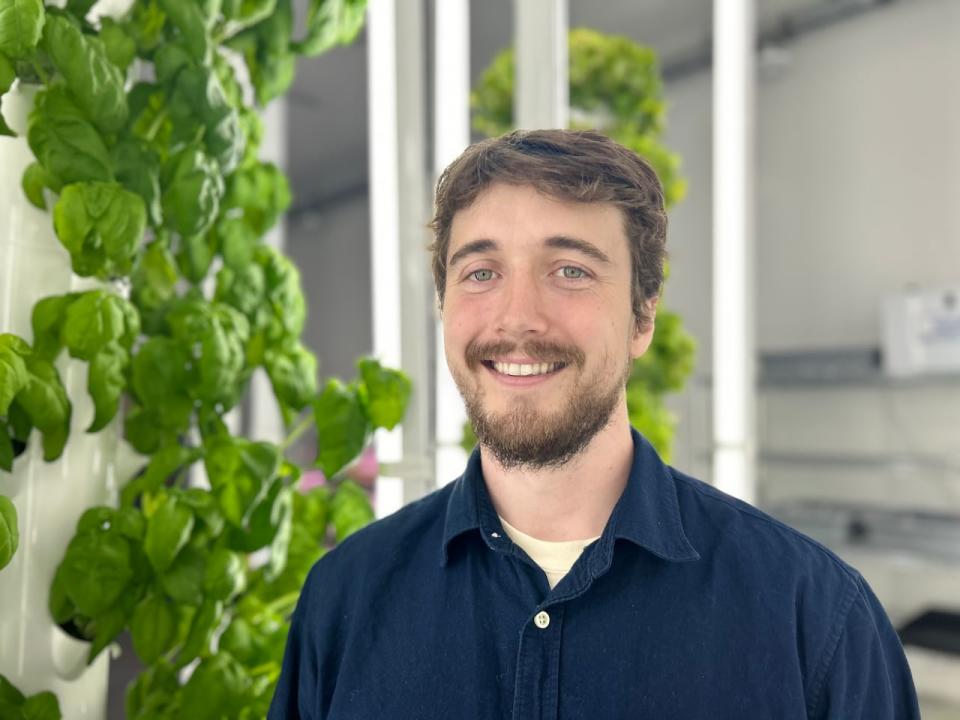
She said in an interview the province only produces 9.1 per cent of its own fruits and vegetables, according to data from 2022 — a small increase from the previous statistic of 7 per cent.
The vertical farm in Blacks Harbour, which sells its produce in the region between St. Stephen and Saint John, is a welcome operation for a rural village that has few options for buying groceries.
WATCH | Take a look inside two of New Brunswick's indoor farms:
The community is categorically a food desert, Goggin said, with the nearest grocery store 15 minutes away by car. A food desert is an area where there are barriers to accessing affordable and nutritious food. With insufficient public transportation, the desert may as well be an island for anyone on a low income, who must rely on someone with a vehicle just to eat.
Soon, though, villagers will be able to stroll down Main Street and buy freshly harvested greens right in their own community. Goggin said the non-profit's storefront will open in the coming weeks, but for now, it sells to local restaurants, small-scale grocers and has tables at nearby farmers' markets.
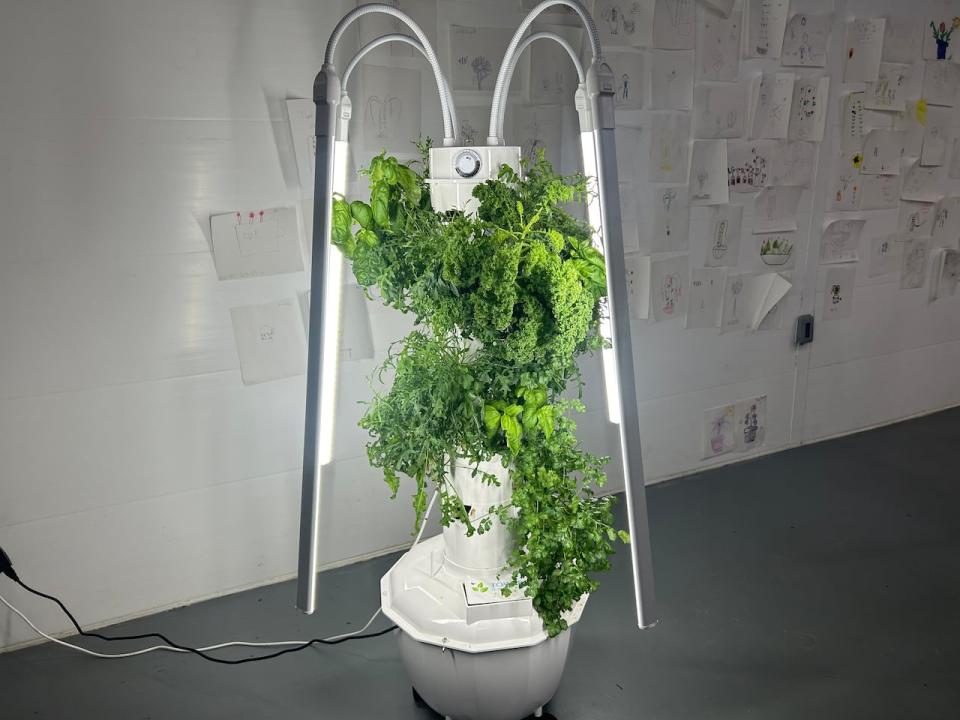
"Our goal with pricing is to be the same or less as the grocery store, so to keep it affordable and not charge too much of a premium on it," he said, adding profits are funnelled back into the organization to fund its other community projects.
Eastern Charlotte Waterways purchased the building for its farm in 2021, which was previously a grocery store that had closed in 2018. While the building was already designed to store and distribute large amounts of food, renovations for the indoor farm began last summer.
"People have been excited to see this building come back to life and to know that there's food being grown locally in this building," Goggin said.
The first crops were planted this spring. Each tower can hold 44 plants, and with new seedlings growing on nearby shelves, Goggin said staff have perfected a rotation that allows for harvest and transplant every four weeks.
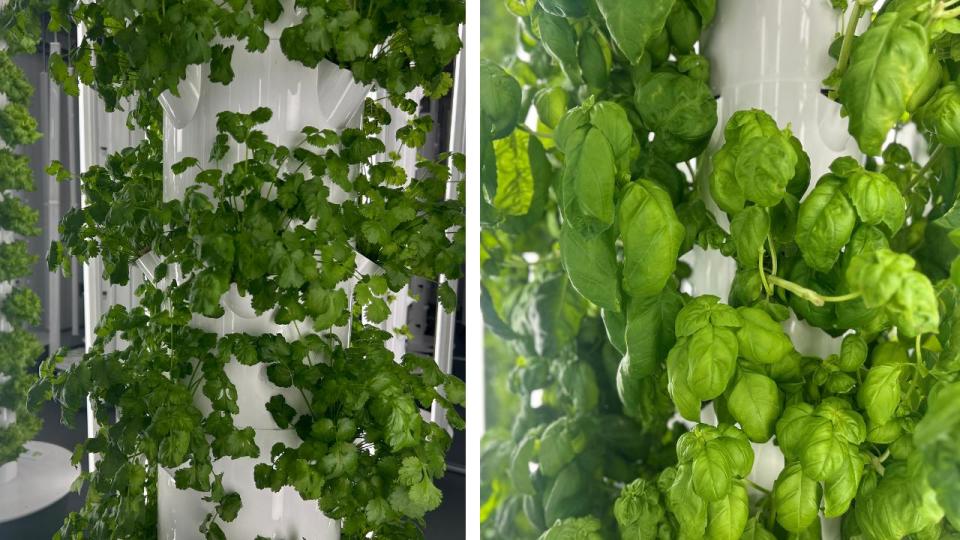
Without having to worry about pests and bad weather, the operation boils down to a delicate dance between light, water and oxygen. The plants receive 12-13 hours of light each day, and all the water and nutrients they need are kept in a reservoir at the base of each tower.
"It's all about keeping the plants happy," Goggin said.
The farm is a step toward building a more robust food system for New Brunswickers, Goggin said, and relying less on imports.
It's a dream shared by Jonathan Howe of Sunden Farms in Lower Coverdale, just a short drive from Moncton.
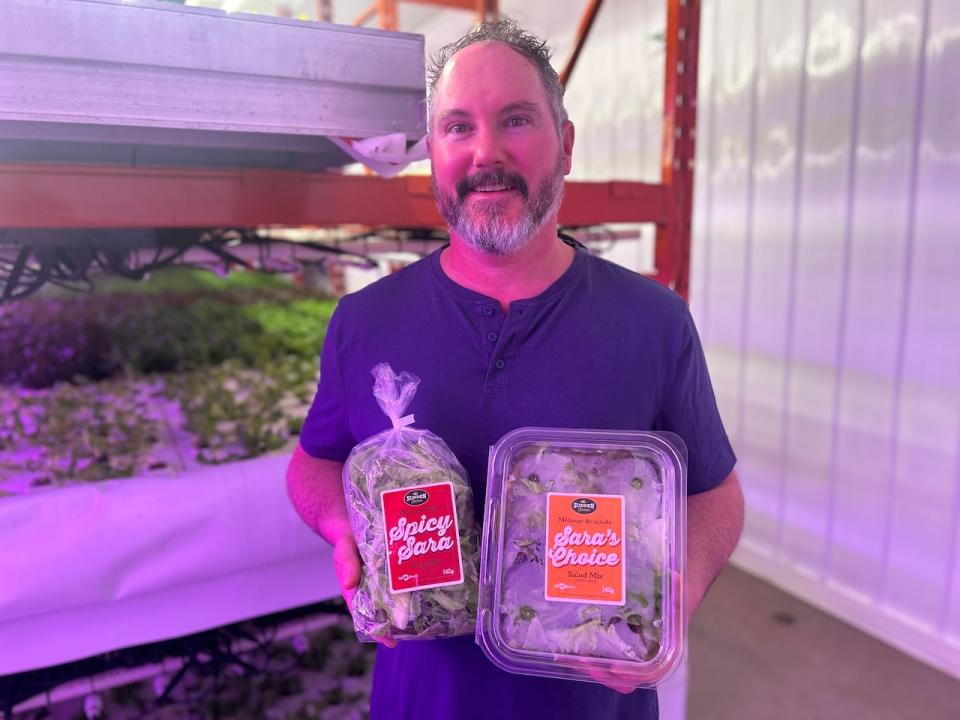
On land that their family has farmed for over 300 years, Howe and his wife RaeAnn operate the biggest indoor farm in New Brunswick.
After retiring from the military due to a traumatic brain injury, Howe said the pair wanted to farm in a different way, especially considering the growing threat of climate change that make the outdoors unpredictable.
Like the farm in Blacks Harbour, Sunden Farms focuses on leafy greens and herbs — for now — and has successfully grown 20 different crops indoors since its beginning in 2017.
Howe said the farm's current success is shaping its future. Sunden can currently grow the equivalent of 44 acres, or 9 hectares, of outdoor production, and just one grow room can produce 500 pounds (227 kilograms) of romaine lettuce. Over the next two years, though, Howe said Sunden will triple its production, then triple again.
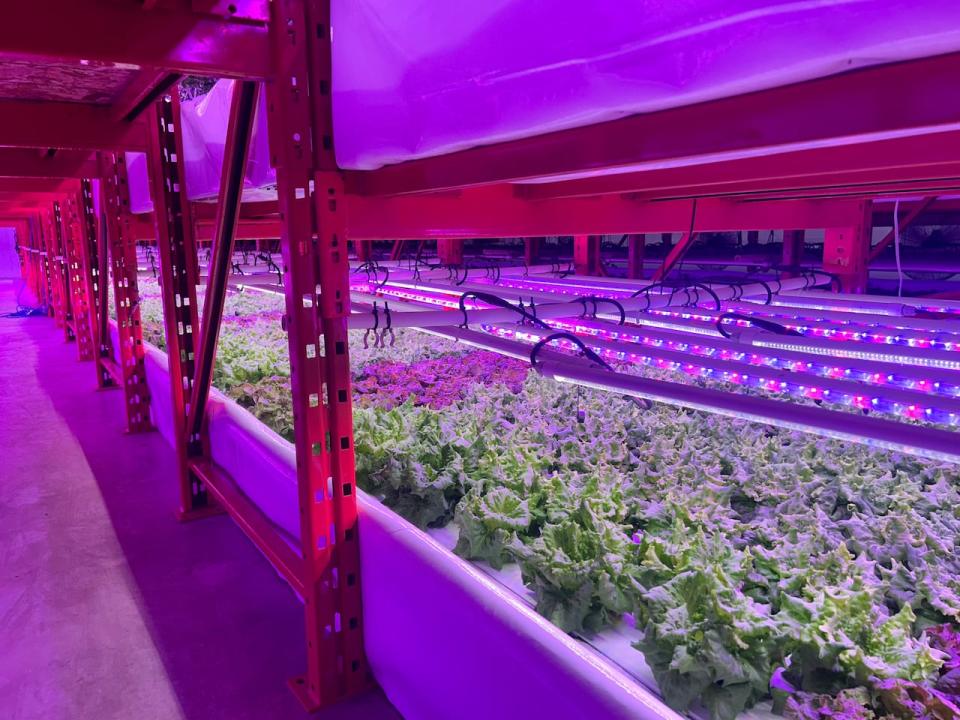
By the end of this year, he said they'll be up to the equivalent of about 120 acres (48 hectares), of outdoor production, "and then next year we're looking at a further expansion of pushing us up to about 400 or 500 acres," he said, which would amount to a maximum of 202 hectares.
Sunden Farms developed lights to tailor wavelengths to the individual plants, which Howe said reduces the facility's energy consumption by over 75 per cent. The farm also exchanges air by pulling in carbon from the outdoors that is stored in the plants themselves. Factor in that the farm recycles its water, and Howe said Sunden is approaching carbon neutrality, with an ultimate goal of reaching carbon negative status.
Farming is a notoriously expensive business to get into, but Howe said Sunden Farms has already passed the break-even stage and is turning a profit. Aside from its box program for the individual consumer, Sunden sells to 14 retailers and approximately 20 restaurants throughout southern New Brunswick.
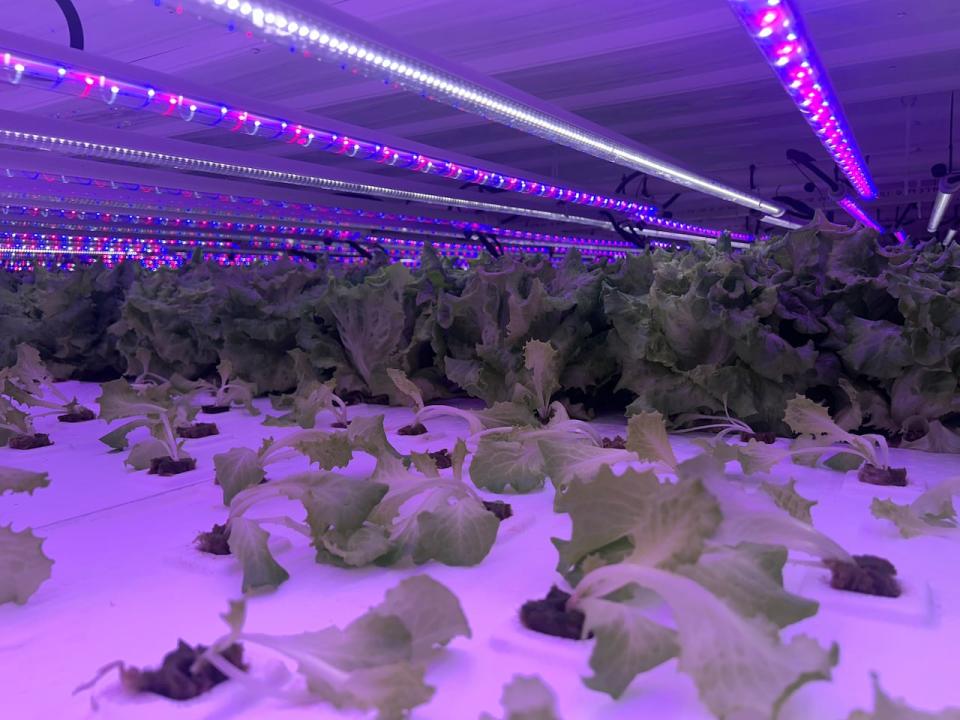
Unable to keep up with demand, Howe said Sunden now has a waitlist for its produce. He also confirmed the farm has attracted interest from all the "major players" in the grocery business, even one that spent four hours touring the facility — though Howe declined to name names.
Howe said getting into business with big grocery will help reduce how much New Brunswick must import leafy greens — roughly 6,000 tonnes per year.
"We'll always need traditional agriculture, but farms like this can really start to replace some of those imports you see coming into the province," he said.


